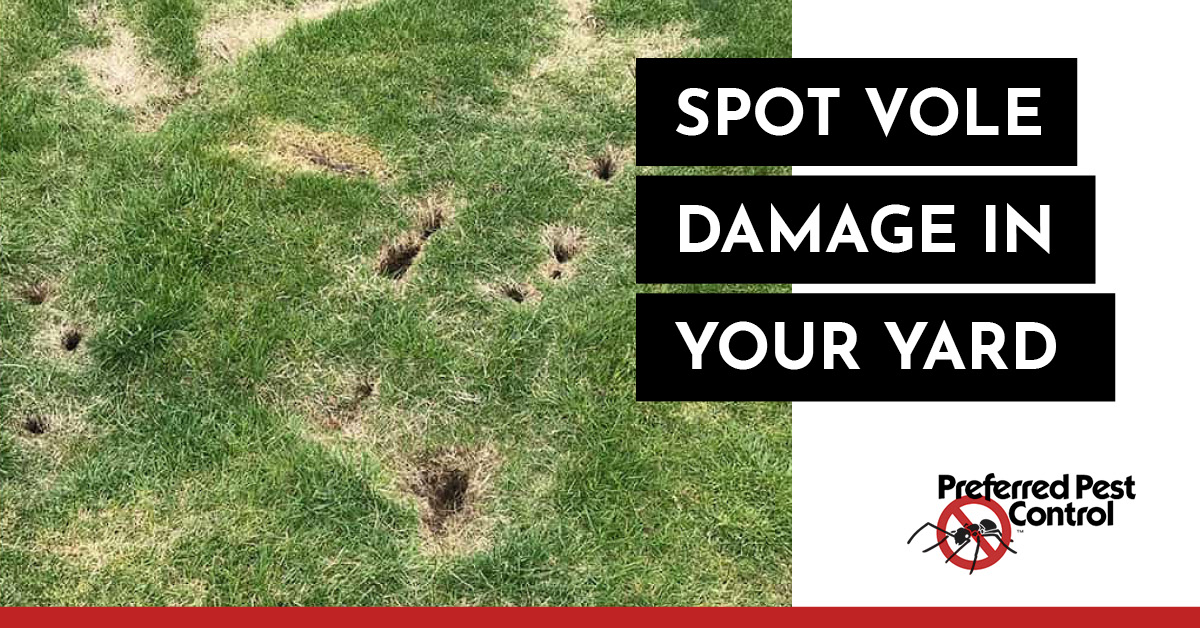Comprehensive Overview to Reliable Vole Parasite Control: Invasion Identification and Therapy Methods
In the world of reliable pest control, vole invasions posture an unique difficulty that requires a critical approach. By checking out the subtleties of vole actions, recognizing key indicators of invasion, and examining an array of control alternatives, one can develop an extensive approach to combat these elusive bugs.
Recognizing Vole Actions
Vole behavior is characterized by their tunneling routines and fast recreation prices, making them a tough insect to manage successfully. These little rats normally develop detailed passage systems underground, utilizing them for sanctuary, food storage space, and transport. Voles are herbivores, taking in a range of plants, lawns, origins, and bulbs, which can trigger considerable damage to yards, orchards, and grass. Their fast reproductive rate further complicates control initiatives, with ladies with the ability of generating several trashes in a single year, each containing numerous children.
Voles are most energetic throughout the morning and evening hours, spending most of their time foraging for food. Their delving behaviors not just disturb lawns and yards but also make them testing to identify and remove. Understanding vole behavior is critical for effective parasite control methods. By determining their burrow locations, checking feeding areas, and applying targeted control methods, such as capturing or habitat modification, vole problems can be managed effectively.
Indicators of Vole Infestation

Prevention Approaches
Implementing effective prevention techniques is critical in decreasing vole problems and securing plants from their harmful feeding routines. To stop vole invasions, it is vital to start by eliminating potential food resources and shelter.
Frequently inspecting the residential or commercial property for indicators of vole activity, such as runways and delve openings, is important for very early detection and punctual action. If vole activity is presumed, take into consideration using repellents or catches strategically put near their paths.
Non-Lethal Control Approaches
To effectively take care of vole populations while prioritizing humane techniques, non-lethal control strategies use useful options for lowering vole damages in yards and landscapes. One reliable approach is making use of physical barriers such as hardware towel or cord mesh to shield vulnerable plants. These obstacles can be hidden at the very least 12 inches deep and bent at a 90-degree angle to avoid voles from burrowing underneath. Additionally, habitat modification can deter voles by decreasing their chosen food sources and hiding spots. Maintaining a well-mowed lawn, removing particles, and maintaining vegetation trimmed can make the setting much less attractive to voles.
Lethal Control Options
One efficient method for resolving vole infestations in landscapes and gardens involves the tactical use of lethal control alternatives. When encountered with an extreme vole problem that non-lethal techniques have actually stopped working to contain, applying lethal control measures comes to be important. One frequently employed lethal control option is making use of snap traps. These catches are developed to rapidly and humanely eliminate voles upon activation, making them a popular choice for several gardeners and landscapers. To raise the performance of snap traps, it is recommended to place them in locations where vole activity is high, such as along runways or near burrow entries. Another deadly control alternative is the usage of hazardous lures particularly developed to target voles. These lures have poisonous substance that is ingested by the voles, leading to their eventual demise. Care has pop over to these guys to be exercised when utilizing hazardous baits to protect against damage to non-target pets or pet dogs. In general, when using dangerous control choices, it is necessary to do so properly and according to local guidelines to efficiently take care of vole invasions.
Verdict
To conclude, efficient vole insect control needs a thorough understanding of vole behavior, recognition of indicators of problem, execution of prevention approaches, and application of both non-lethal and deadly control approaches. By incorporating these approaches, individuals can effectively manage vole populations and safeguard their residential property from damage. It is essential to attend to vole infestations without delay to avoid additional concerns and lessen the influence on the surrounding environment.
Offered the elaborate tunnel systems and fast recreation rates particular of voles, acknowledging the indicators of vole problem ends up being crucial in reliable pest control. One of the primary indications of vole presence is the visibility of surface runways or routes in lawn or snow, normally regarding 1-2 inches wide, produced as voles travel in between their burrows and food sources.To successfully take care of vole populations while focusing on humane methods, non-lethal control approaches use useful services for lowering vole damage in yards and landscapes.One reliable technique for resolving vole invasions in landscapes and gardens includes the critical usage of dangerous control alternatives. vole pest control.In verdict, reliable vole parasite control requires a detailed understanding of vole habits, recognition of signs of problem, execution of avoidance methods, and utilization of both lethal and non-lethal control methods